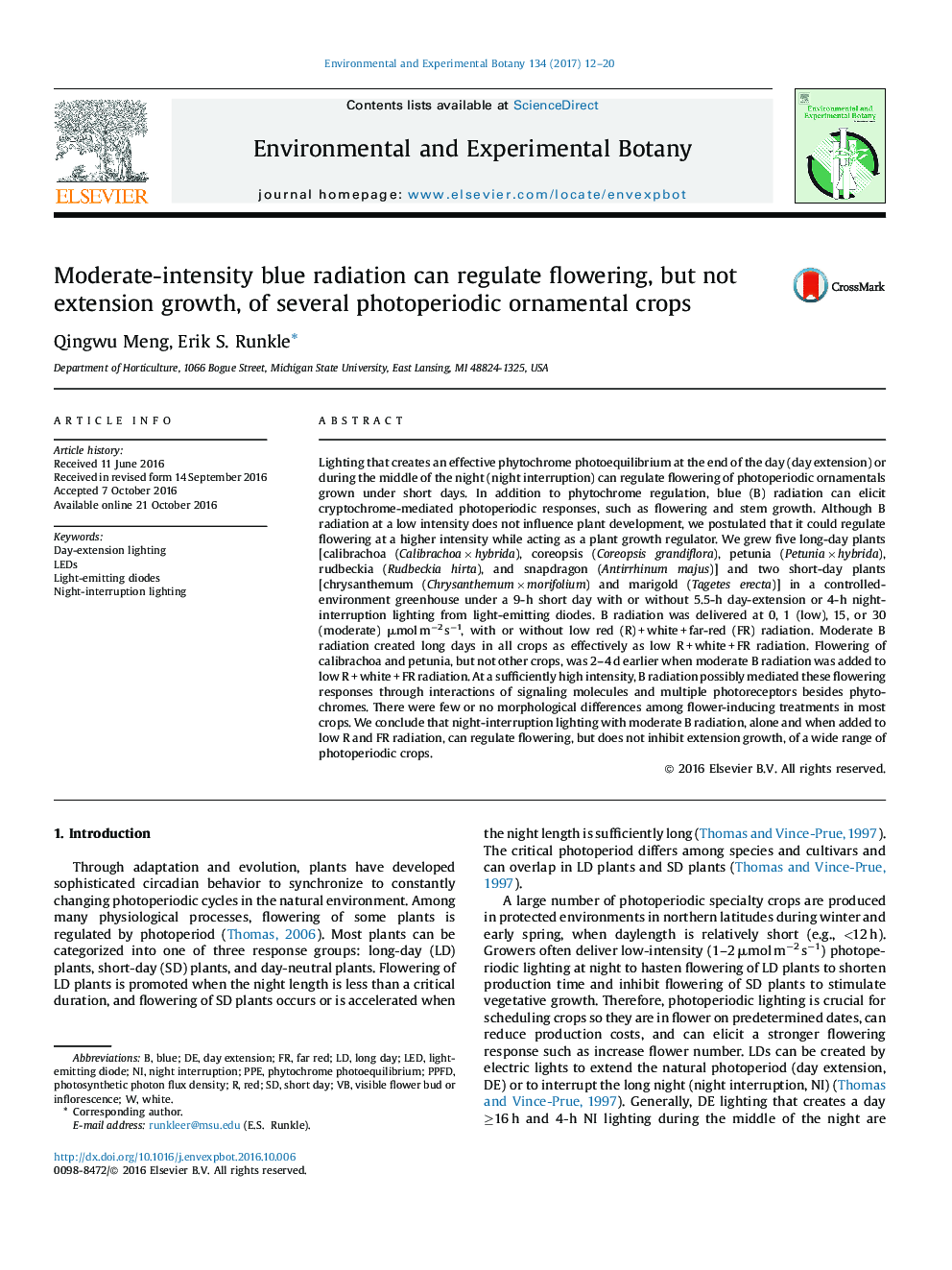| Article ID | Journal | Published Year | Pages | File Type |
|---|---|---|---|---|
| 4553990 | Environmental and Experimental Botany | 2017 | 9 Pages |
•A relatively high intensity of blue radiation during the night regulated flowering.•Moderate blue radiation can be as effective as low red and far-red radiation.•Additional blue radiation sometimes elicited a stronger long-day response.•Blue radiation did not affect extension growth of most ornamentals studied.
Lighting that creates an effective phytochrome photoequilibrium at the end of the day (day extension) or during the middle of the night (night interruption) can regulate flowering of photoperiodic ornamentals grown under short days. In addition to phytochrome regulation, blue (B) radiation can elicit cryptochrome-mediated photoperiodic responses, such as flowering and stem growth. Although B radiation at a low intensity does not influence plant development, we postulated that it could regulate flowering at a higher intensity while acting as a plant growth regulator. We grew five long-day plants [calibrachoa (Calibrachoa × hybrida), coreopsis (Coreopsis grandiflora), petunia (Petunia × hybrida), rudbeckia (Rudbeckia hirta), and snapdragon (Antirrhinum majus)] and two short-day plants [chrysanthemum (Chrysanthemum × morifolium) and marigold (Tagetes erecta)] in a controlled-environment greenhouse under a 9-h short day with or without 5.5-h day-extension or 4-h night-interruption lighting from light-emitting diodes. B radiation was delivered at 0, 1 (low), 15, or 30 (moderate) μmol m−2 s−1, with or without low red (R) + white + far-red (FR) radiation. Moderate B radiation created long days in all crops as effectively as low R + white + FR radiation. Flowering of calibrachoa and petunia, but not other crops, was 2–4 d earlier when moderate B radiation was added to low R + white + FR radiation. At a sufficiently high intensity, B radiation possibly mediated these flowering responses through interactions of signaling molecules and multiple photoreceptors besides phytochromes. There were few or no morphological differences among flower-inducing treatments in most crops. We conclude that night-interruption lighting with moderate B radiation, alone and when added to low R and FR radiation, can regulate flowering, but does not inhibit extension growth, of a wide range of photoperiodic crops.
Graphical abstractFigure optionsDownload full-size imageDownload as PowerPoint slide
